Although the 1822 Pattern Light Cavalry Saber gets the credit as the sword of the Charge of the Light Brigade the truth is that about half of the men involved carried the newly issued 1853 Pattern Cavalry Saber. The sword has a three-bar hilt reminiscent of the 1822 Pattern, but the similarities end there. Unlike the Pipe-Backed 1822, the 1853 has a fullered, slightly curved blade with a spear-point tip. It is intended to be both a thrusting and cutting sword, and while capable of both it does neither as well as a sword specialized in either function. This was largely because this was the first sword that would be issued to both light and heavy cavalry units, instead of the earlier practice of having a specialized cutting and an optimized thrusting sword for the different types of cavalry.
A utilitarian sword, the 1853 sword is the last three-bar hilt British sword, for guards of this type were found to be difficult to be repaired. Later British swords had largely solid-plate designs to overcome this. This was also the first British sword to have a large tang that formed part of the handle – an alteration resulting in greater durability. Many of these swords were sold and shipped to the Confederates during the American Civil War.
This replica of the 1853 Cavalry Saber has an unsharpened blade of high carbon steel. The guard is of steel and the grip is formed of two checkered, hard-rubber halves riveted to the thick tang. The base of the blade is inscribed with the replicated makers mark John Harvey of Birmingham. Comes with a steel scabbard with two integrated hanging rings of steel.



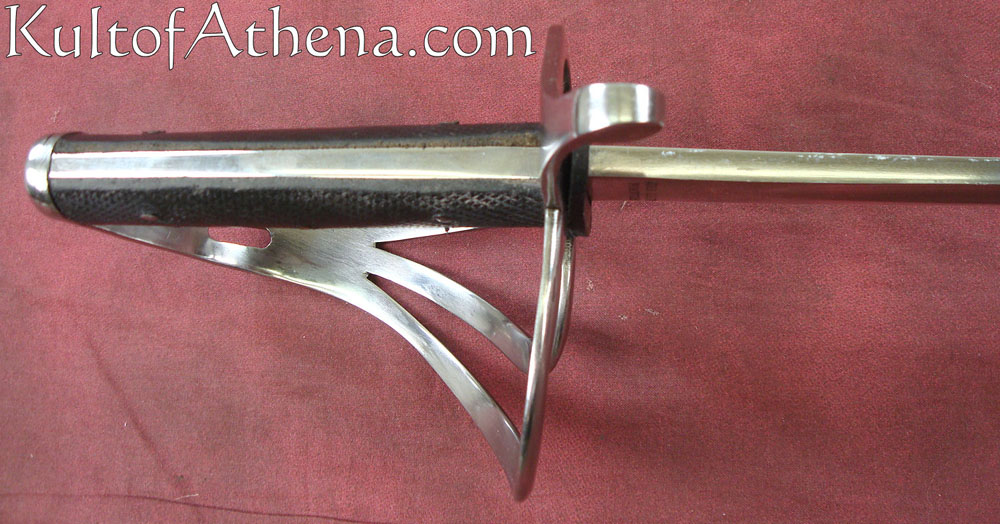

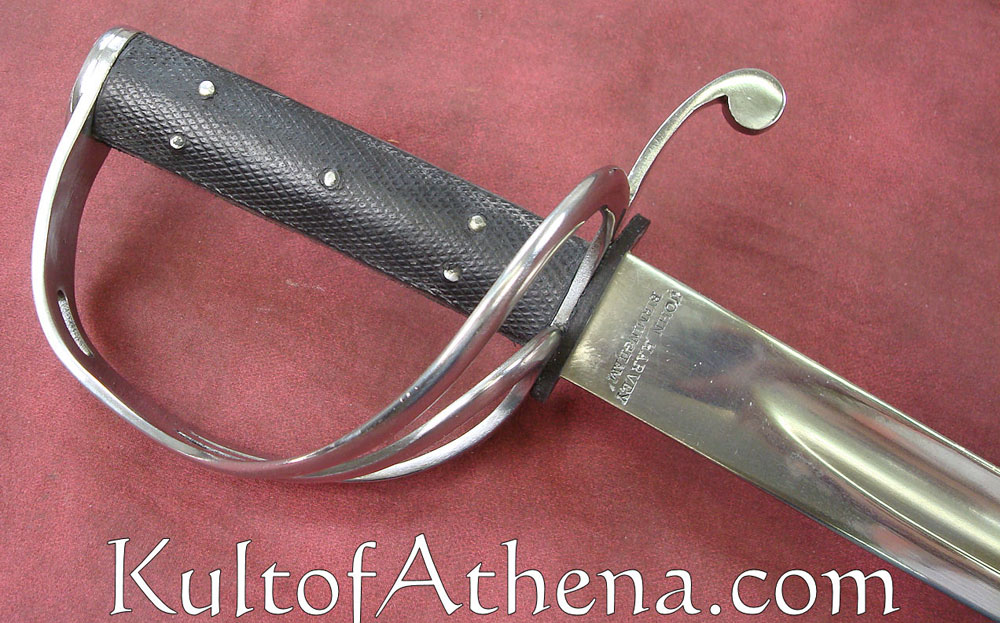
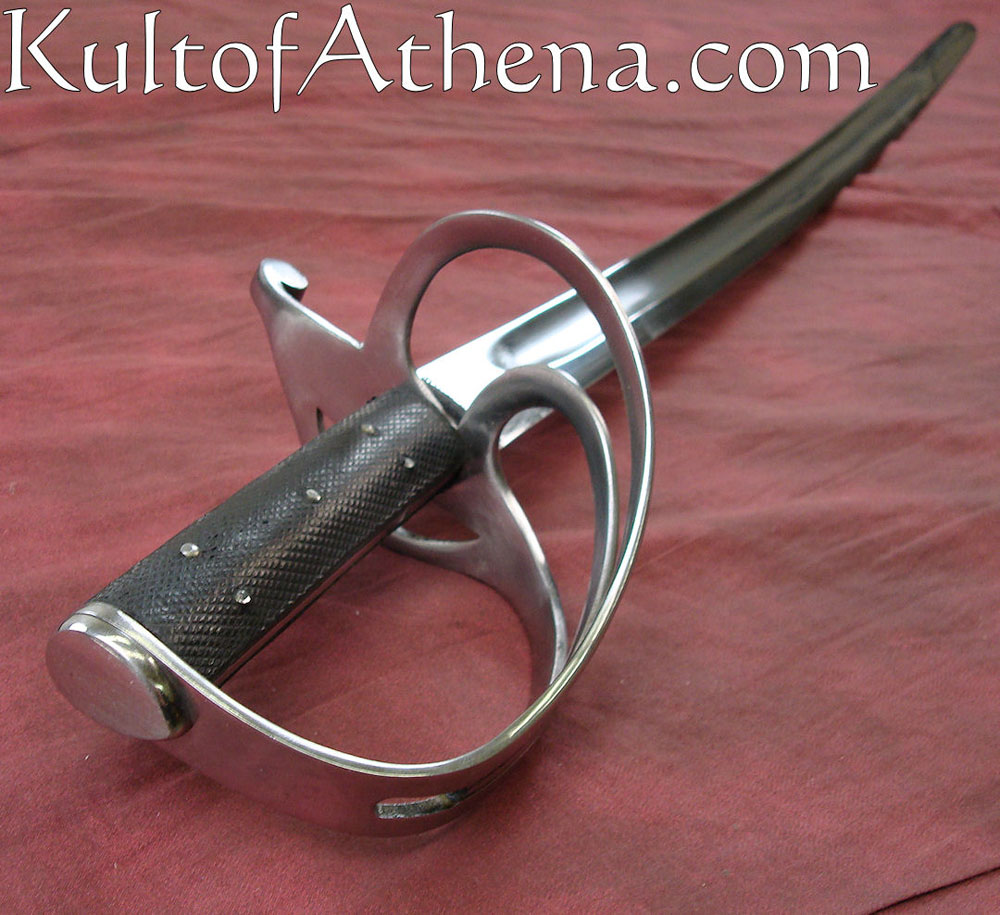
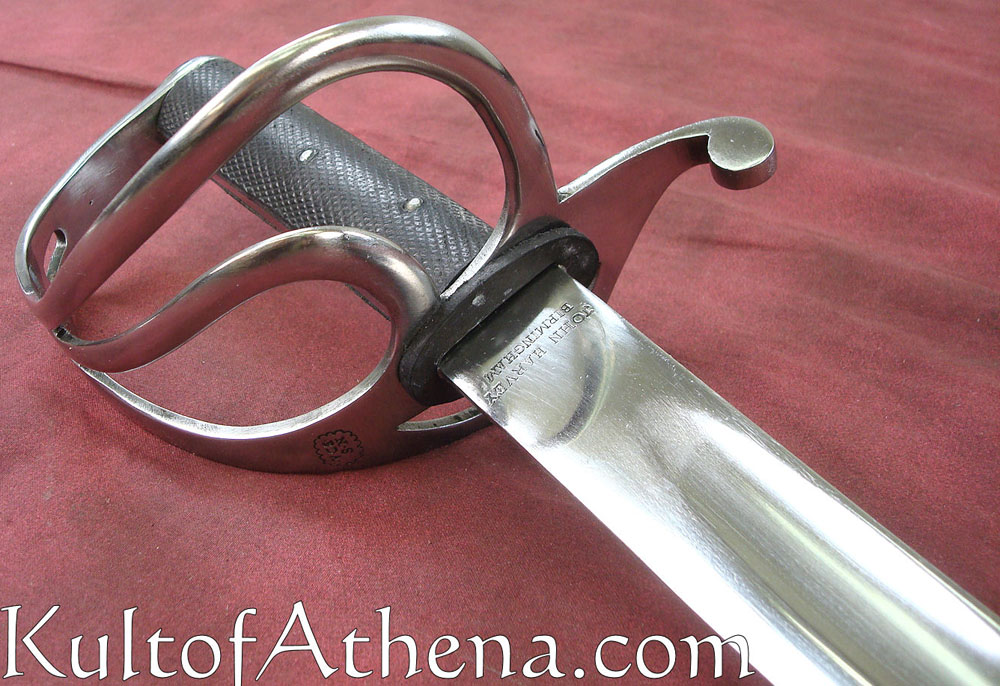


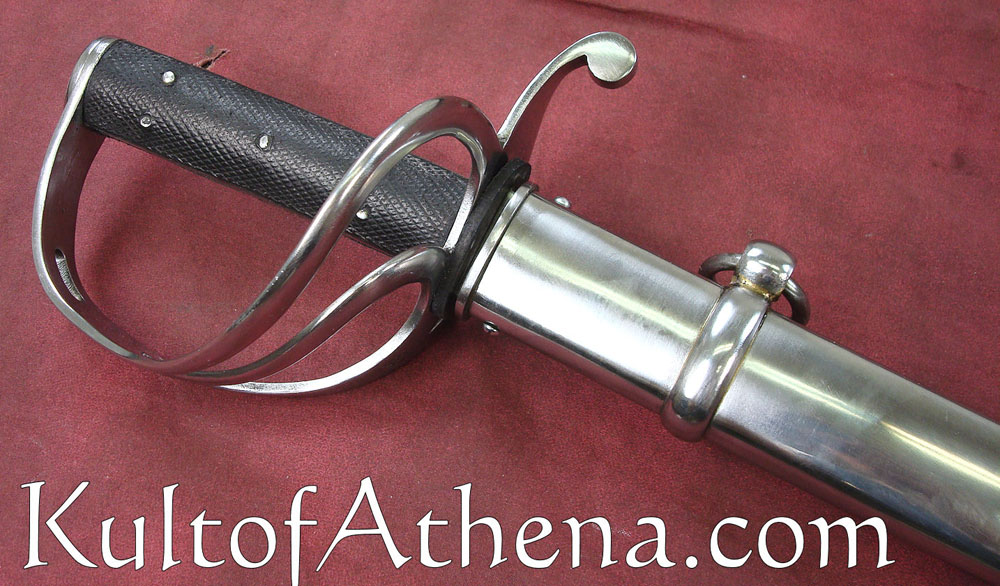
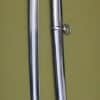
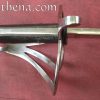
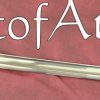
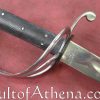
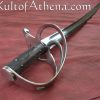

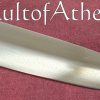
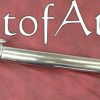

Roy –
Okay sword for an okay price Cuts well through light things like milk jugs. Edge holds up through it, but it’s front heavy for a light saber. The back edge cuts just as well as the forward edge.
Dave K. –
Best 1853 repro available I have had three P1853 enlisted repros pass thru my hands. They all use slightly different solutions to produce the sword. All compromise on the end product.
This has the best balance of the three, although the hilt is a bit small and the foible should be ground to 1.9 mm not 3.6 mm. The original P1821 and P1853 are BIG bladed cavalry swords, but they have excellent handling characteristics. This one is manageable, but could be improved upon.
Isaac Reis (verified owner) –
The scabbard came a little dirty but it can be buffed out, the grips are loose but that does not really matter in terms of structural stability thanks to the Reeves Pattern Tang (full-width tang). Another problem with the gips is that the rubber is very poor and turns your hands black unless mine is just dirty. It fits very snugly into its scabbard, sometimes it takes a bit of force and/or sliding it in at a good angle. In terms of historical accuracy, the quillon protrudes more than an original but it still looks fine. The sabre feels like it could pass the British Proof Test that Cold Steel does and nothing is loose (that is super important) and it does not rattle. I did a little bit of the flex test (very lightly) and there was no problem, I’ve also struck boxes (and a hard floor by accident) to find no damage to the blade. I did not get mine sharpened and is still factory dull so I can’t say about that plus this is my first sword ever so I’m not super knowledgeable in what a good or bad sword really is. I personally really like this sword.